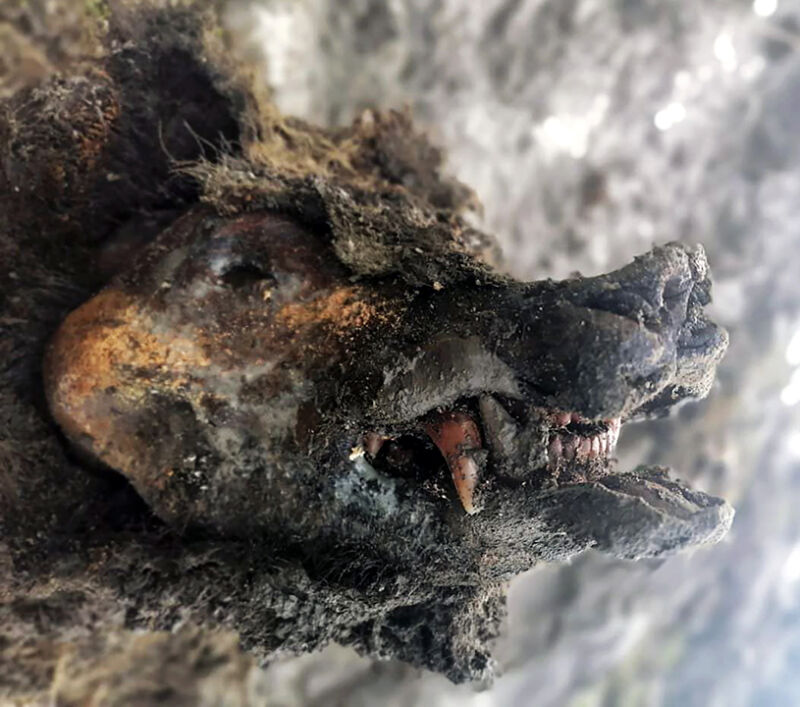Beautifully preserved cave bears emerge from Siberian permafrost

Enlarge / My, what big teeth you have. (credit: NEFU)
Reindeer herders on the Siberian island of Bolshoy Lyakhovsky recently stumbled across the frozen carcass of a cave bear. Nearby, on the Siberian mainland of Yakutia, a tiny, beautifully preserved cave bear cub recently emerged from another patch of melting permafrost. It's the first time in 15,000 years that humans have come face to face with a cave bear in the flesh-until now, we've known the species only from bones, tracks, and abandoned nests.
The bear necessitiesMany of our ancestors knew cave bears (Ursus spelaeus) all too well. At Denisova Cave in Siberia's Altai Mountains, about 3,600km (2,200 miles) from Bolshoy Lyakhovsky Island, a 2019 study of coprolites (fossil poop) and ancient DNA mixed into the cave sediment found that bears had lived in the cave off and on for around 300,000 years, probably alternating with the Neanderthals, Denisovans, and Homo sapiens who also lived there at various times.
In fact, most cave bear fossils have been found inside caves, and paleontologists think these bears probably lived in the caves full-time, rather than just popping in for a quick four-month nap. Across Europe and Asia, bears and people probably competed for the same real estate for around 300,000 years; it probably wasn't much of a contest, though. These lumbering Ice Age giants stood 3.5 meters (11.5 feet) high when they reared up on their hind legs, and the largest males weighed up to 600 kilograms (1,320 pounds). That's about the size of a large polar bear or Kodiak bear today. You wouldn't want to meet one in a dark cave.
Read 8 remaining paragraphs | Comments